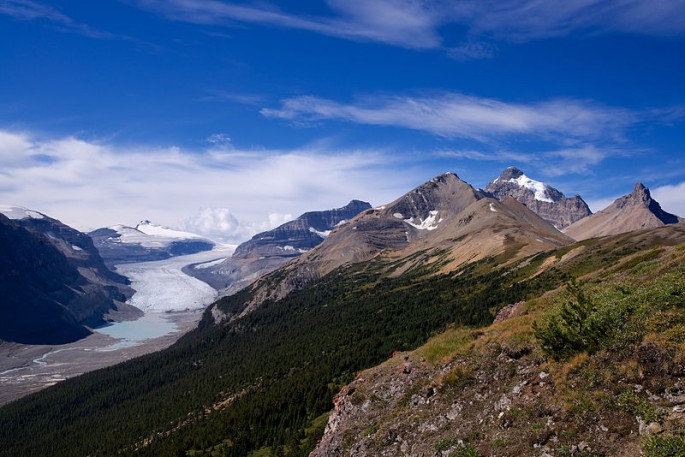A new study estimates that glaciers found in western Canada can shrink by as much as 70 percent in the year 2100 due to climate change.To date, these glaciers span some 10,300 square miles that is about the size of U.S. state Vermont.
New data simulations predict that these melting glaciers can increase sea levels by one sixth of an inch.
When glaciers form, they grow in varying angles from each other which can cause these frozen formations to melt in specific directions that is relative to the slope of the area. However, most computer simulations do not apply these directional flow of melting water.
Using climate models that simulated the glaciers in 3D, they revealed that ice loss is estimated up to 25 percent more that previously calculated by scientists.
In addition, the simulations also estimate that the drier Rocky Mountains would lose 90 percent of ice coverage at the end of the century as compared to in 2005. Also, mountains located at Canada's coast can receive more moisture than those located in the eastern regions, which can also lose almost half of their ice mass.
Computer models also suggest that those glaciers found in Alberta and British Columbia, all 17,000 of them, will suffer great ice losses especially during the decades between 2030 and 2040.
According to Garry Clarke of the Department of Earth, Ocean and Atmospheric Sciences from the University of British Columbia, most of the ice holdouts will be seen in the northwestern region of the province where the mountains can even appear like in Colorado and California, where ice has become non existent in those landscapes.
Glaciers provide pivotal sources of energy for the country. The melting water can help maintain agriculture and supply water to homes. This water is also an important source of hydroelectric power where residents rely on electricity from the rivers.
Clarke adds that these glaciers act as a thermostat for freshwater systems in the region. He says that when these glaciers disappear, the streams become warmer and it will dramatically change the fresh water ecosystem especially for salmon.
This study is published in the journal, Nature Geoscience.



























